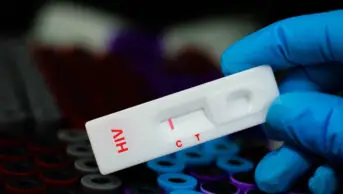Some curious beliefs about ears and earrings
Hearing is an essential part of the means by which animals communicate with one another. Moreover, it offers one of the warning devices that tell an individual of a looming hazard and, therefore, in extreme situations may help to save life. In this respect it ranks next to sight in the list of the essential senses.
This holds true both in the primitive and selfish states of animal communities and in our most sophisticated and developed civilisations. Inevitably, a mass of folklore has accumulated over the centuries regarding the ear. If you experience burning or itching of the organ it means that someone is talking about you. This idea goes back to Pliny in the first century AD and was commented on by Geoffrey Chaucer in the 1400s.
The left and right ears are said to carry different messages. The left indicates that friends are praising you, the right that your character is being defamed. However, ringing in the left ear is a premonition of bad news.
The size and shape of ears has a bearing on their significance. Small ones denote generosity in the owner, while well-curled ones promise a long life. Ears that lie flat to the skull show a high degree of breeding in their owner. Ears that protrude unduly are frowned upon. For some obscure reason they are attributed to Pontius Pilate.
There is substantial belief, even among surgeons, it is said, that the piercing of ears improves the owner’s eyesight. In this connection there was a story of a woman in Devonshire who used to make door-to-door collections, from men only, to pay for earrings that would improve sight.
At one time, gypsies and sailors had a near monopoly of brass earrings for men. Sailors wore them because they were believed to guard them against drowning. The term “ear marked” referred to the cattle identified against loss by their owners. Earrings were once reputed to penetrate the ears and affect the brain. The ears of many politicians, it is well known, are proof against adverse comment.
Physical sciences are moving eastwards
An intriguing situation affecting much of worldwide science is noted in the 21 June issue of Nature. Asia has now joined America and Europe in publishing research papers in physics and chemistry and promises to exceed them in output.
But Asia’s political complications greatly affect the picture. Japan, China and South Korea, for example, are still arguing over responsibility for past wars and ownership of territory. It is almost impossible for scientists to obtain permission to travel to conferences and consult authorities, although a united Asian scientific community would be a formidable body of opinion.
Asia and the Pacific region are particularly strong in the physical sciences. Their output of papers matches that of the US and is only slightly behind that of Europe. In chemistry the region is level with Europe and far ahead of the US. Further advances in this direction will depend on better co-operation between the national bodies. There are strong academic ties with places where scientists trained or were awarded grants. Western funding bodies have shown a wider international outlook than that of their Asian parallels and local prestige affects attitudes.
Communication is often overlooked as an important factor. Researchers need to work hard to circumvent political tensions and establish strong regional institutions of genuine quality. Possibly areas of common interest — such as global warming — will serve to pull Asian scientists more closely together.
Fascinating folklore of the fingers
In folk tradition fingers have many roles. Not least of these are differences in their functions as separate units.
The forefinger of the right hand has been viewed as poisonous and therefore unsuitable for use in applying an ointment to a cut or a bruise. On the other hand, there is the ring finger, which is healing when applied for massage, although in the same context it has some reputation of conveying harm if misused. The ancient belief was and still is to a great extent that a vein runs from the ring finger to the heart, hence the custom of wearing engagement and wedding rings on the fourth finger of the left hand.
The little finger rarely has any distinct function in beliefs but there is a superstition to the effect that when two people find themselves saying the same thing simultaneously they should link little fingers and make a secret wish. For one child to pinch the corresponding finger of another and provoke a scream signifies that the recipient of the pain cannot be trusted to keep a secret.
Fingers may be crossed to ensure luck or avert bad luck. This habit is, of course, still common. There are many other gestures made with the fingers, some of which are intensely antisocial. Thumbing one’s nose towards another is generally regarded as insulting, whereas raising the thumb from the mass of fingers is a sign of approval of an action.
The presentation of two divergent fingers towards another is universally taken as an insult — except when used by Winston Churchill to signify “V” for victory. Since the time of the Tudors gesturing with the thumb between clenched fingers has been regarded as a sexual insult reflecting on virility and gesturing with the forefinger and little finger extended from the clenched fist is an expression of cuckoldry.

